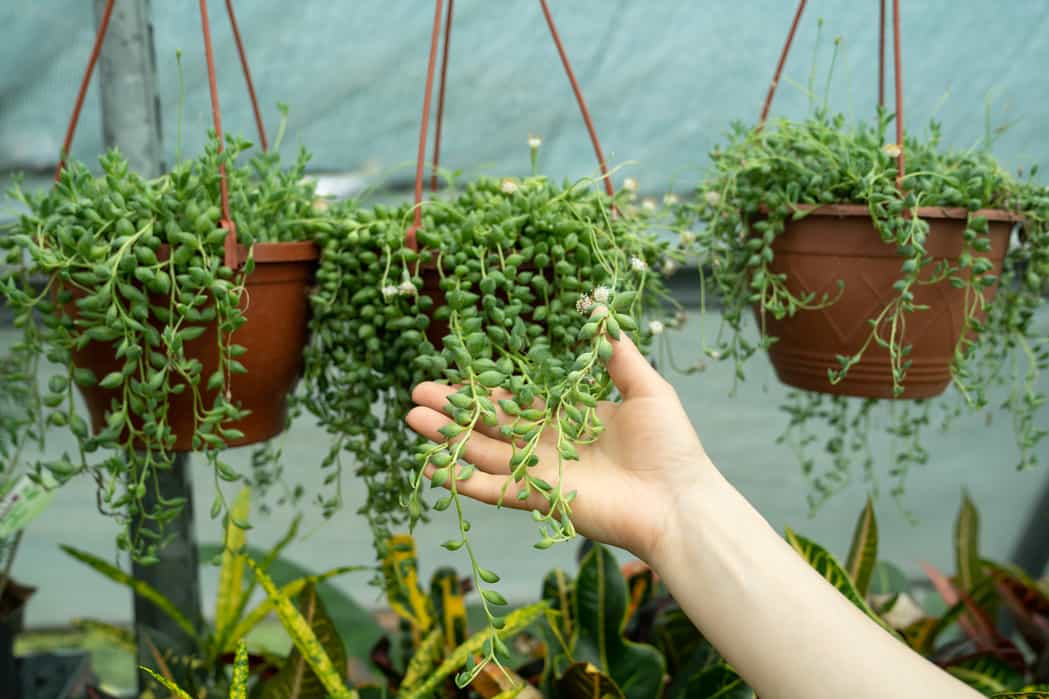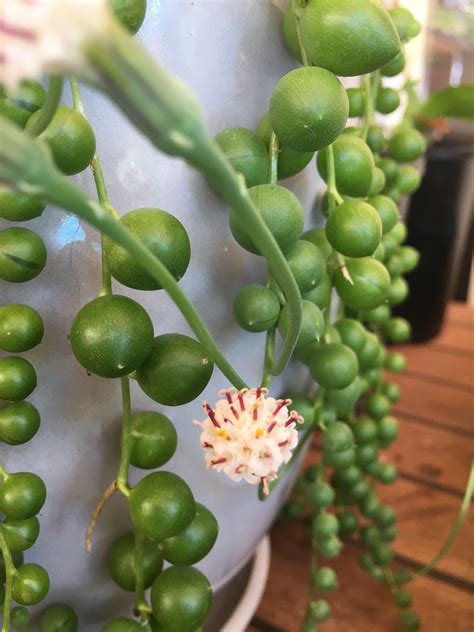Unlocking the Secrets of this Trailing Treasure
The String of Pearls succulent, with its delicate, rounded “pearls” and trailing stems, has become a popular choice among succulent enthusiasts. Its unique appearance and low-maintenance requirements make it an ideal addition to indoor and outdoor spaces. As a result, the demand for a comprehensive String of Pearls care guide has increased, as enthusiasts seek to provide their plants with the optimal conditions for growth and beauty. By understanding the specific needs of this succulent, growers can unlock its full potential and enjoy its trailing beauty for years to come.
How to Provide the Perfect Environment for Your String of Pearls
Creating an ideal environment is crucial for the optimal growth and beauty of String of Pearls. This succulent thrives in bright, indirect light, making east- or west-facing windows perfect for indoor cultivation. When outdoors, provide partial shade to prevent scorching. In terms of temperature, String of Pearls prefers daytime temperatures between 65°F to 75°F (18°C to 24°C) and nighttime temperatures around 55°F (13°C). Humidity levels should be moderate, ranging from 40% to 60%. To replicate these conditions indoors, use sheer curtains to filter direct sunlight, maintain a consistent temperature, and employ a humidifier if necessary. By providing the perfect environment, you’ll be well on your way to creating a thriving String of Pearls, and a comprehensive String of Pearls care guide will help you achieve this.
The Art of Watering: Avoiding Overhydration and Underhydration
Watering is a crucial aspect of String of Pearls care, and it’s essential to strike the right balance. Overwatering can lead to root rot, while underwatering can cause the stems to shrivel. To avoid these issues, water your String of Pearls sparingly, allowing the soil to dry out completely between waterings. Check the soil moisture by sticking your finger into the soil up to the first knuckle. If the soil feels dry, it’s time to water. Watering once a week is a good rule of thumb, but this may vary depending on the climate and time of year. When watering, make sure to water thoroughly, allowing excess water to drain from the pot. A comprehensive String of Pearls care guide will emphasize the importance of proper watering techniques to ensure the health and beauty of your plant. By following these guidelines, you’ll be able to provide your String of Pearls with the right amount of moisture, and it will thrive as a result.
Fertilizing for Success: Nourishing Your String of Pearls
Fertilization plays a vital role in String of Pearls care, providing essential nutrients for healthy growth and development. When it comes to choosing a fertilizer, opt for a balanced, water-soluble formula that is specifically designed for cacti and succulents. A 20-20-20 formula is ideal, as it provides equal amounts of nitrogen, phosphorus, and potassium. Fertilize your String of Pearls during the growing season (spring and summer) once a month, and skip fertilizing during the dormant season (fall and winter). Dilute the fertilizer to half the recommended strength to avoid burning the roots. A comprehensive String of Pearls care guide will emphasize the importance of fertilizing, as it promotes robust growth, vibrant colors, and a strong root system. By incorporating fertilization into your care routine, you’ll be rewarded with a thriving and beautiful String of Pearls.
Pruning and Propagation: Shaping and Sharing Your String of Pearls
Pruning and propagation are essential aspects of String of Pearls care, allowing you to shape and share your plant with others. Pruning helps maintain the plant’s trailing shape, encourages new growth, and removes any dead or damaged stems. To prune your String of Pearls, use clean, sharp scissors or pruning shears to trim back long stems, removing any weak or damaged segments. This will encourage the plant to produce new growth and maintain its desired shape. Propagation is also a simple process, involving the use of stem cuttings. Take 2-3 inch stem cuttings from the tips of the plant, allowing them to dry out for a few days to form a callus. Then, plant the cuttings in well-draining soil, watering sparingly until roots develop. A comprehensive String of Pearls care guide will provide detailed guidance on pruning and propagation, empowering you to share your plant with others and create new, thriving specimens. By mastering these techniques, you’ll be able to enjoy the beauty of your String of Pearls for years to come.
Pest Control and Disease Prevention: Common Issues and Solutions
As a responsible String of Pearls care guide, it’s essential to be aware of the common pests and diseases that can affect your plant. Mealybugs, spider mites, and scale are common pests that can infest String of Pearls, causing damage to the leaves and stems. To prevent infestation, inspect your plant regularly, and isolate any new plants before introducing them to your collection. Organic pest control methods, such as neem oil and insecticidal soap, can be effective in eliminating infestations. Fungal diseases, such as root rot, can also affect String of Pearls, often caused by overwatering. To prevent disease, ensure good air circulation, avoid waterlogged soil, and remove any infected areas promptly. A comprehensive String of Pearls care guide will provide detailed guidance on pest control and disease prevention, empowering you to identify and address any issues quickly and effectively. By taking proactive steps to prevent pests and diseases, you can ensure the health and happiness of your String of Pearls.
Repotting and Soil Selection: Giving Your String of Pearls a Fresh Start
As a crucial aspect of String of Pearls care, repotting and soil selection play a vital role in providing your plant with the necessary nutrients and support for optimal growth. When to repot your String of Pearls depends on the plant’s growth rate and potting mix quality. Typically, repotting every 1-2 years is recommended, using a well-draining potting mix specifically designed for cacti and succulents. A String of Pearls care guide will emphasize the importance of choosing a potting mix that retains moisture but drains excess water, preventing root rot. When repotting, gently remove the plant from its pot, inspect the roots, and trim any dead or damaged roots. Then, place the plant in its new pot, adding fresh potting mix around the roots. Water sparingly after repotting to prevent washing away the new potting mix. By following these guidelines, you’ll be able to give your String of Pearls a fresh start, ensuring it continues to thrive and flourish.
Troubleshooting Common Problems: Ensuring the Health and Happiness of Your String of Pearls
As a dedicated String of Pearls care guide, it’s essential to be aware of common issues that can arise when caring for these beautiful succulents. Droopy stems, yellowing leaves, and root rot are all common problems that can be easily addressed with the right knowledge and techniques. For instance, droopy stems can be caused by overwatering, underwatering, or lack of light. To resolve this issue, adjust your watering schedule, ensure the plant is receiving sufficient light, and prune any dead or damaged stems. Yellowing leaves can be a sign of nutrient deficiency or overfertilization. To address this, adjust your fertilization schedule, and consider using a balanced, water-soluble fertilizer. Root rot, often caused by overwatering, can be prevented by ensuring good drainage, avoiding waterlogged soil, and repotting the plant in fresh, well-draining potting mix. By being proactive and addressing these common issues, you can ensure the health and happiness of your String of Pearls, and enjoy its trailing beauty for years to come. A comprehensive String of Pearls care guide will provide detailed guidance on troubleshooting common problems, empowering you to overcome any challenges that may arise.








